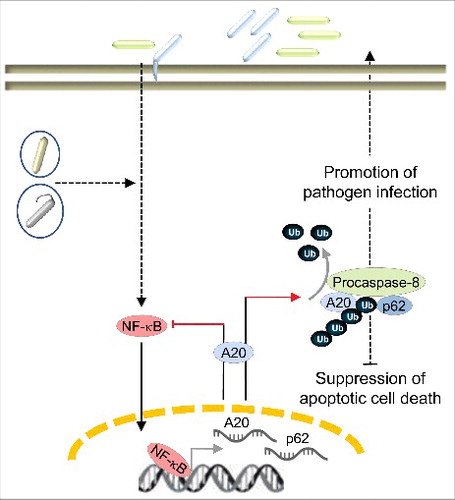Figures & data
Figure 1. Schematic presentation of pathogen-induced A20 and its role in promoting H. pylori infection. In response to infection by extra- and intracellular pathogens (different colored rods), the host activates multiple signaling cascades, one of which is the NF-κB signaling pathway. NF-κB-induced A20 can be advantageous for pathogen infection. In H. pylori-infected gastric epithelial cells, A20 participates in the apoptotic cell death pathway by deubiquitinylating procaspase-8. Interestingly, the scaffold protein p62 is important for this interaction of A20 with procaspase-8. These events suppress host apoptotic cell death, which is beneficial for the colonization and persistence of H. pylori.

